A block A of mass 3kg and another block B of mass 2kg are connected by a light inextensible string as shown in figure. If the coefficient of friction between the surface of the table and A is 0.5 What maximum mass C is to be placed on A so that the system is to be in equlibrium
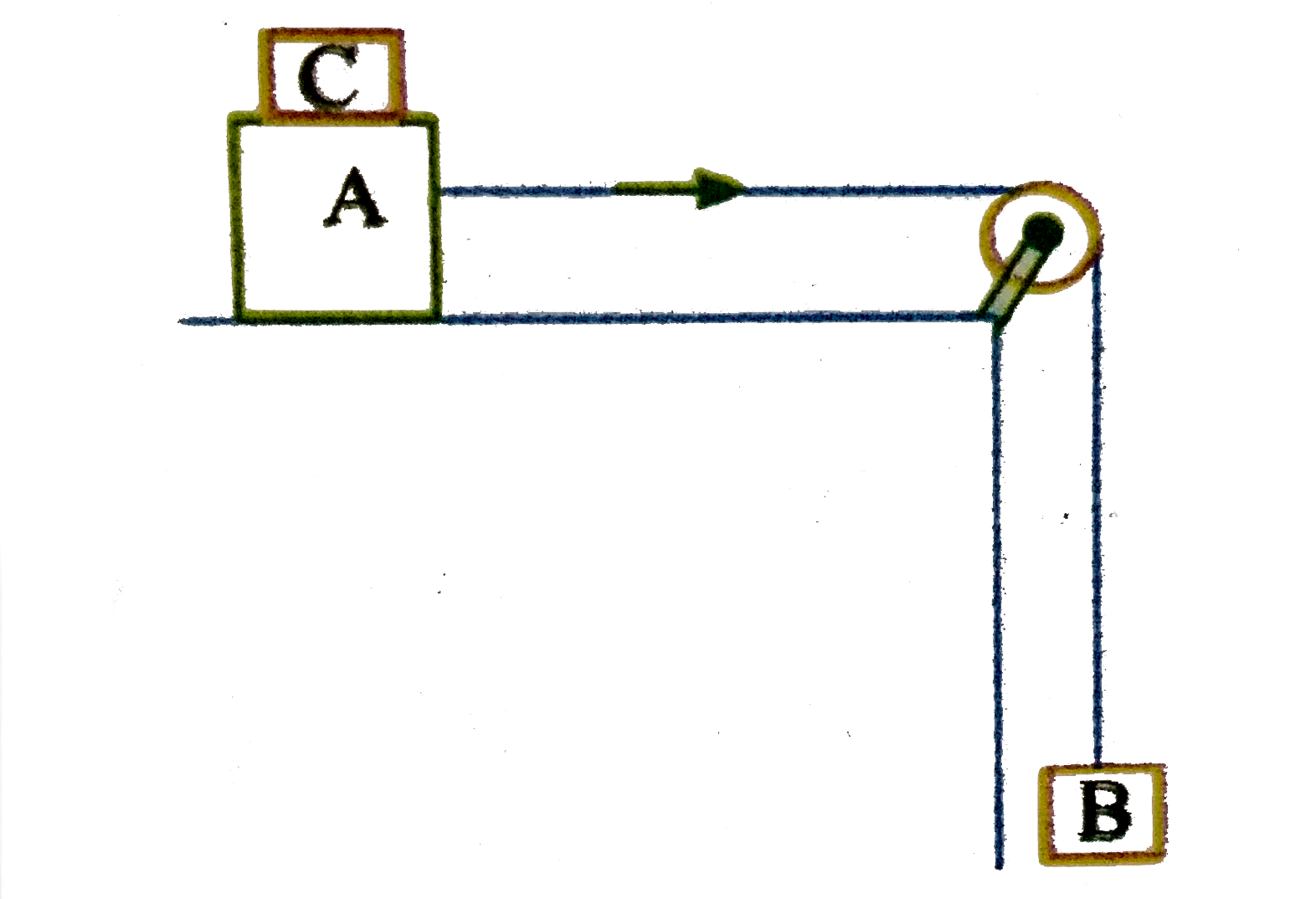 .
.
3kg
2kg
1kg
4kg
The correct Answer is:C
For equilibrium f=μmBg,f=μ(mA+mC)g .
Topper's Solved these Questions
- NEWTONS LAWS OF MOTIONBOOK - NARAYNACHAPTER - NEWTONS LAWS OF MOTIONEXERCISE - LEVEL -III
31 Videos
- NEWTONS LAWS OF MOTIONBOOK - NARAYNACHAPTER - NEWTONS LAWS OF MOTIONEXERCISE - NCERT BASED QUESTION
33 Videos
- NEWTONS LAWS OF MOTIONBOOK - NARAYNACHAPTER - NEWTONS LAWS OF MOTIONEXERCISE - LEVEL -I (C.W)
47 Videos
- MOTION IN A STRAIGHT LINEBOOK - NARAYNACHAPTER - MOTION IN A STRAIGHT LINEEXERCISE - Level 2 H.W
29 Videos
- OSCILLATIONSBOOK - NARAYNACHAPTER - OSCILLATIONSEXERCISE - EXERCISE - IV
41 Videos
Similar Questions
The block A in the given figure is of mass 10√3 kg The coefficient of friction between the block and the surface on which it rests is 0.5. Find maximum mass of block B possible such that the system will be in equilibrium is.
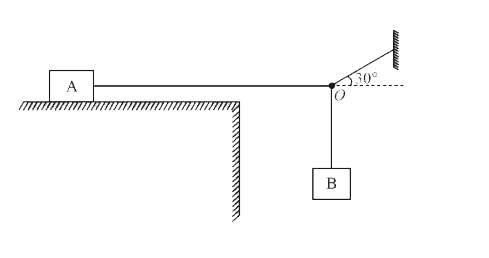
View SolutionA block A of mass 100 kg rests on another block B of mass 200 kg and is tied to a wall as shown in the figure. The coefficient of friction between A and B 0.3. The minimum force F required to move the block B is (g=10−2
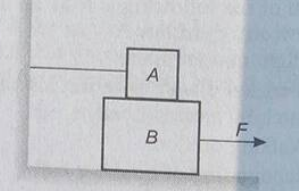
View Solution
Knowledge Check
A block A of mass 3kg and another block B of mass 2 kg are connected by a light inextensible string as shown in figure. If the coefficient of friction between the surface of the table and A is 0.5. What maximum mass C is to be placed on A so that the system is to be in equilibrium ?
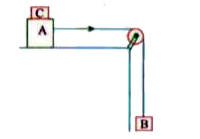 A3kgB2kgC1kgD4kg
A3kgB2kgC1kgD4kgIn the shown ,two blocks one of mass 5kg and the other of mass 2kg are connected by light and inextensible string Pulleys are light an d frictionless Choose the correct statement
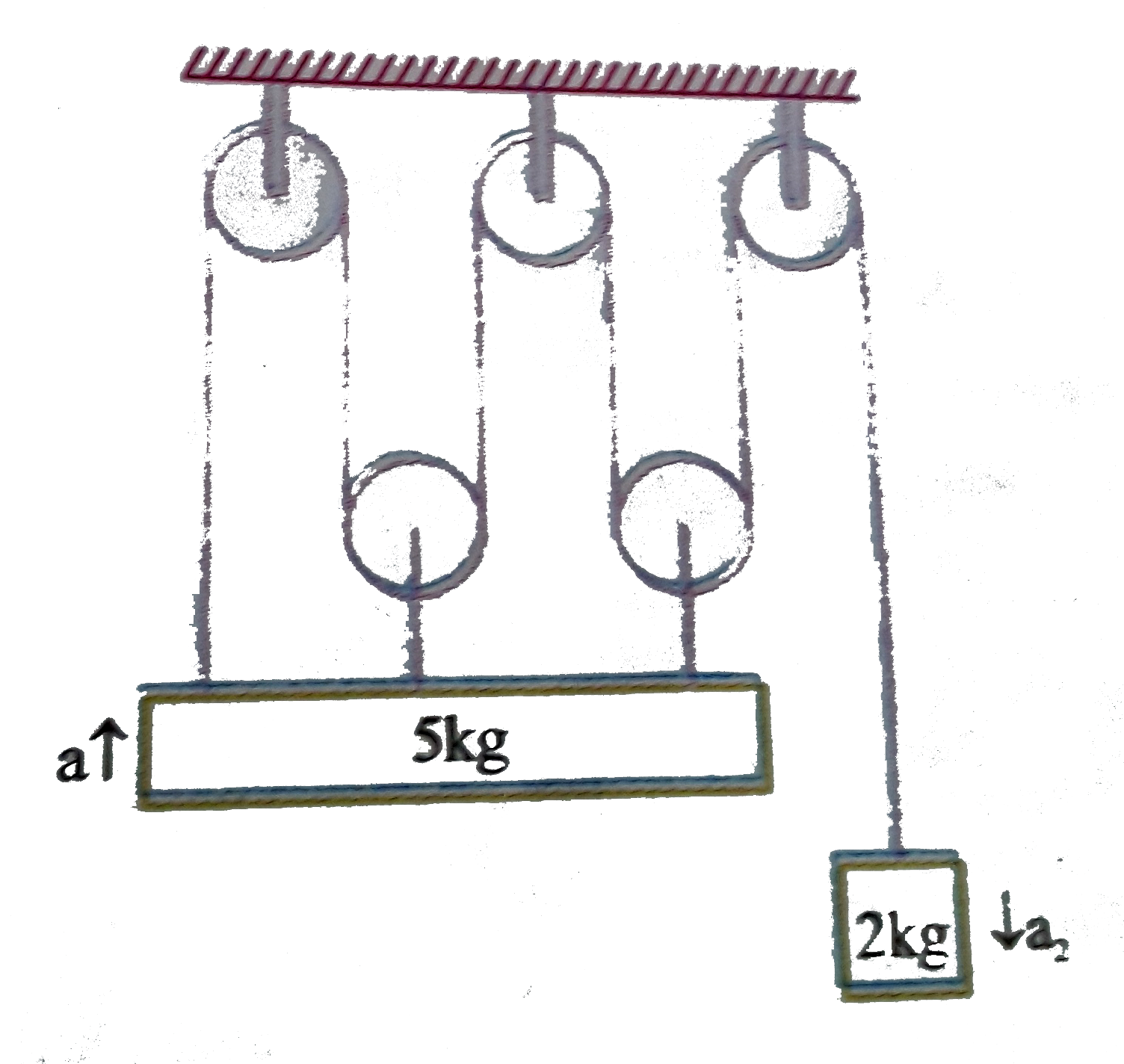 .AThe acceleration of 5kg mass is 5g11ms−2BThe acceleration of 2kg mass is 5g11ms−2CTension in the string is 12g11N .DTension in the string is 10g11N .
.AThe acceleration of 5kg mass is 5g11ms−2BThe acceleration of 2kg mass is 5g11ms−2CTension in the string is 12g11N .DTension in the string is 10g11N .A block A of mass 100 kg rests on another block B of mass 200 kg and is tied to a wall as shown in the figure. The coefficient of friction between A and B 0.3. The minimum force F required to move the block B is (g=10−2
 A900 NB200 NC1100 ND700 N
A900 NB200 NC1100 ND700 N
A block A of mass 100 kg rests on another block B of mass 200 kg and is tied to a wall as shown in the figure. The coefficient of friction between A and B is 0.2 and that between B and ground is 0.3. The minimum force required to move the block B is (g=10ms−2)
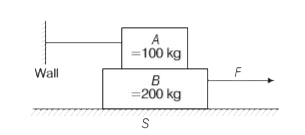
View SolutionTwo blocks A and B are connected by a light inextensible string passing over a fixed smooth pulley as shown in figure The coefficient of friction between the block A and B the horizontal table is μ=0.5. If the block A is just , find ratio of the masses of the blocks
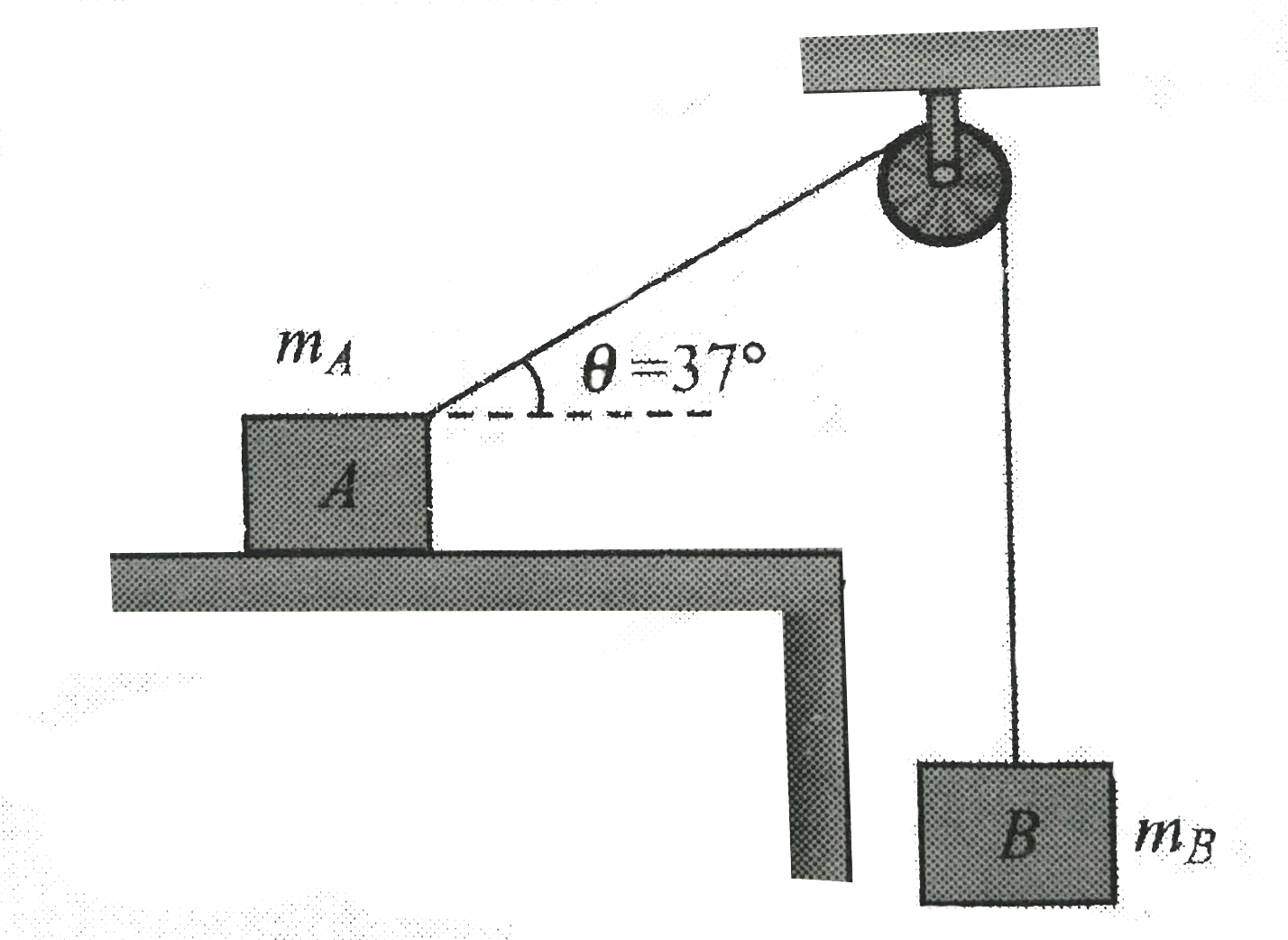
View SolutionTwo mass A and B of 5 kg and 6 kg are connected by a string passing over a frictionless pulley fixed at the corner of table as shown in figure-2.179. The coefficient of friction between A and the table is 0.3. The minimum mass of C that must be placed on A to prevent it from moving is equal to : (Take g=10ms2)
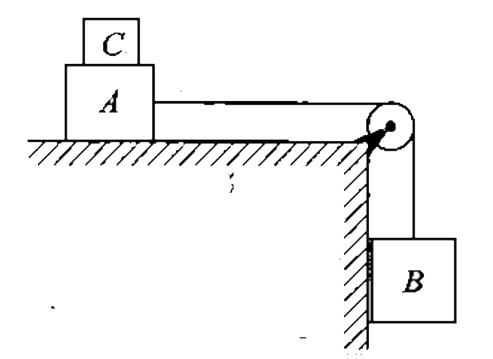
View SolutionTwo blocks A and B of mass 10 kg and 20 kg respectively are placed as shown in figure .Coefficient of friction between all the surface is 0.2 (g=10m/s2) Then,
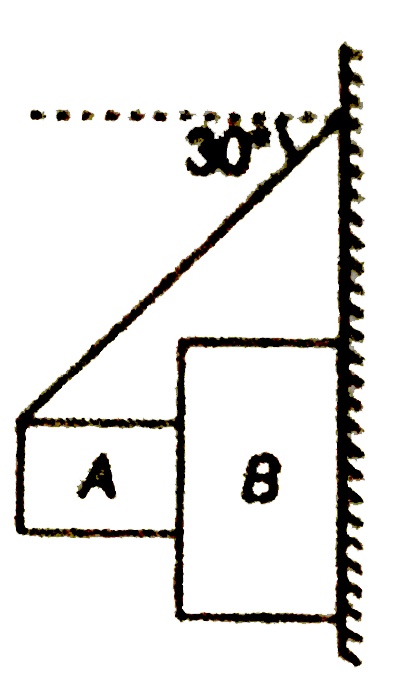
View SolutionA block of mass m=4kg is placed oner a rough inclined plane as shown in figure. The coefficient of friction between the block and the plane is μ=0.5 . A force F=10N is applied on the block at an angle of 30∘ .
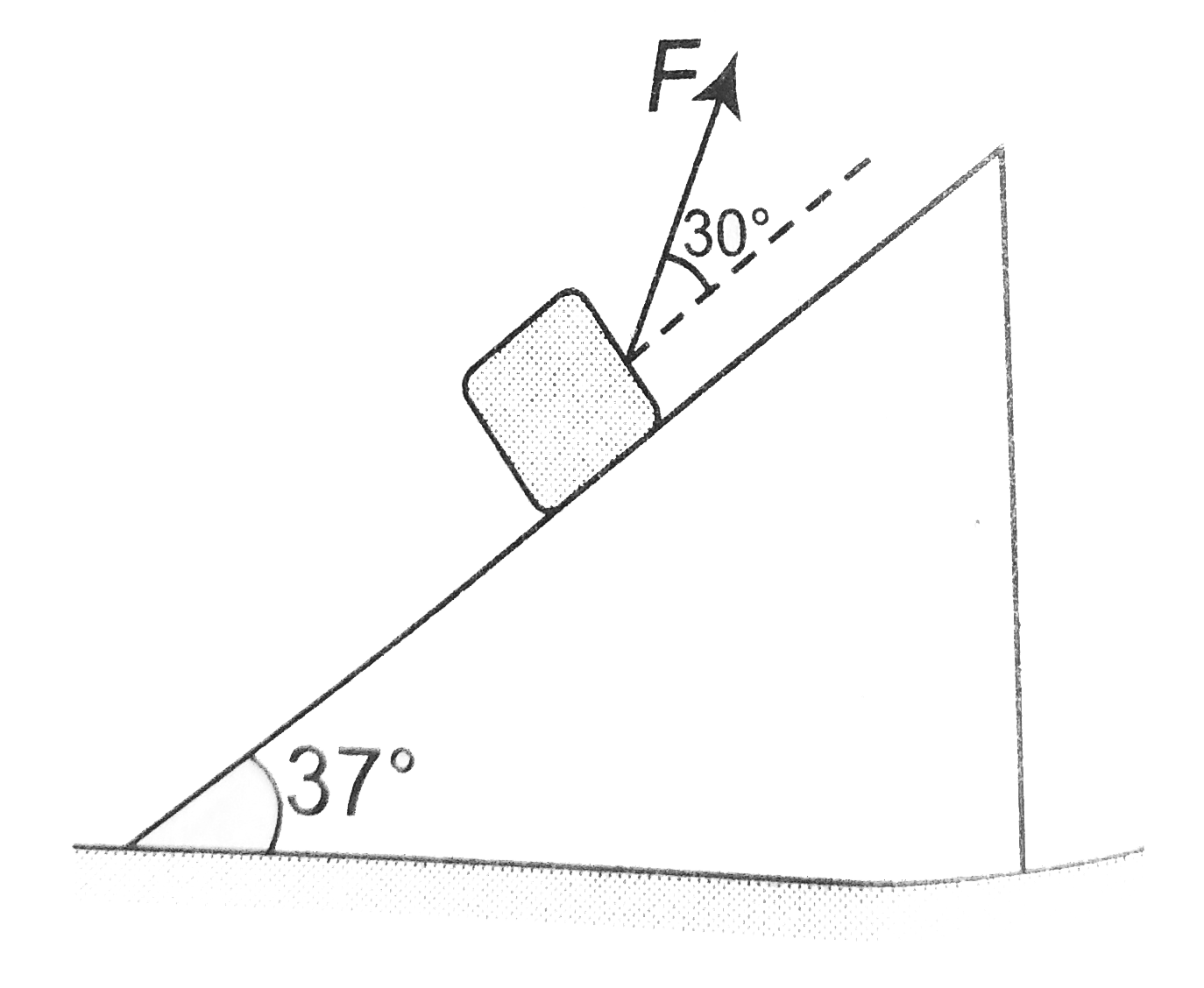
View Solution
